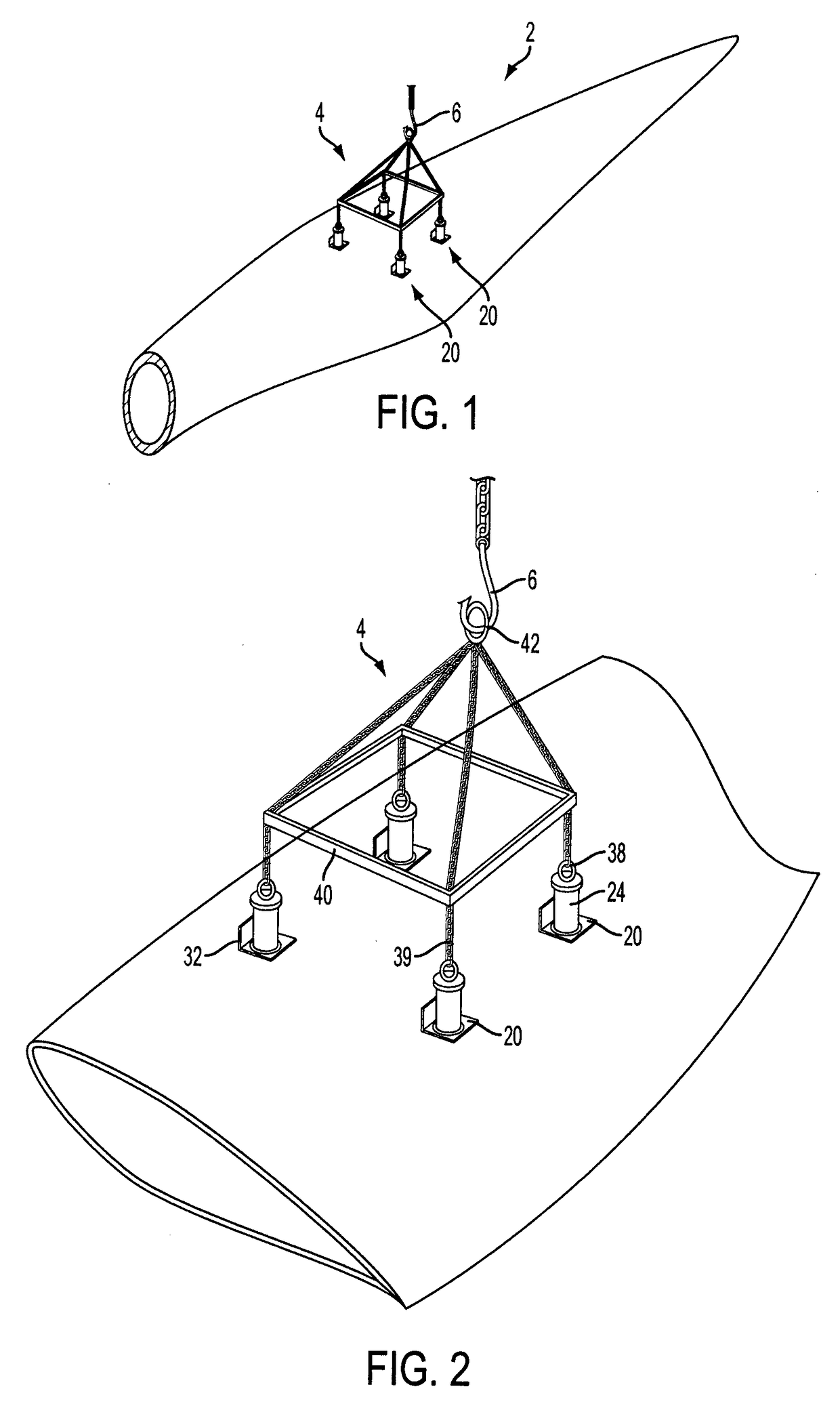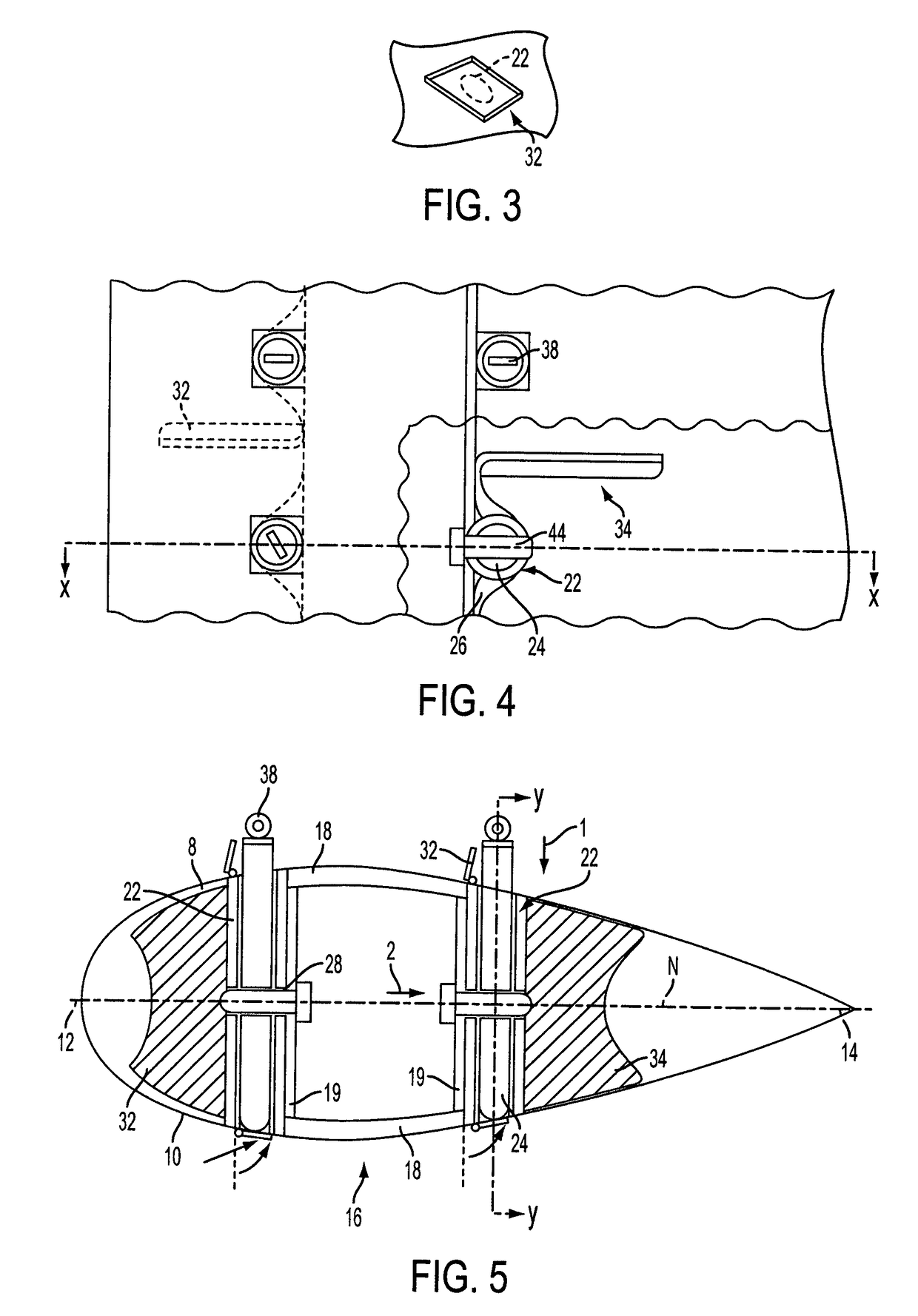Wind turbine blade structures, lifting assemblies and methods of blade handling
a technology of wind turbine blades and components, applied in the direction of propellers, renewable energy products, water-acting propulsive elements, etc., can solve the problems of slings exerting potentially damaging forces on blade parts, relative sliding, and increasing repair or replacement problems, so as to limit the stress at the connection point
- Summary
- Abstract
- Description
- Claims
- Application Information
AI Technical Summary
Benefits of technology
Problems solved by technology
Method used
Image
Examples
Embodiment Construction
[0043]Turning to the drawings, FIG. 1 shows a wind turbine blade, generally indicated 2, being lifted by a lifting assembly 4 which is connected to a lifting hook 6 suspended from a crane (not shown). As indicated in FIGS. 1 and 2, the blade is provided with lifting points 20, most preferably four such lifting points, provided spaced equidistantly about the blade's centre of gravity and to which the lifting assembly is attached, whereby when lifted the blade adopts a balanced orientation.
[0044]As an alternative to four such lifting points, a pair of lifting points could be utilised, arranged equidistantly about the centre of gravity. As a further alternative, the lifting points could be spaced in pairs arranged along the blade, for example one pair could be located at a position between the centre of gravity and the root end, and a second pair between the centre of gravity and the tip end. As a still further alternative, further additional lifting points could be provided so that 6 ...
PUM
 Login to View More
Login to View More Abstract
Description
Claims
Application Information
 Login to View More
Login to View More - R&D
- Intellectual Property
- Life Sciences
- Materials
- Tech Scout
- Unparalleled Data Quality
- Higher Quality Content
- 60% Fewer Hallucinations
Browse by: Latest US Patents, China's latest patents, Technical Efficacy Thesaurus, Application Domain, Technology Topic, Popular Technical Reports.
© 2025 PatSnap. All rights reserved.Legal|Privacy policy|Modern Slavery Act Transparency Statement|Sitemap|About US| Contact US: help@patsnap.com



